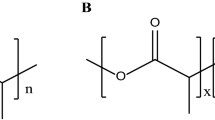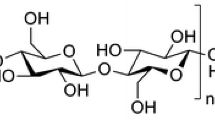Abstract
The fields of materials science, cell and molecular biology, and surgical reconstruction are merging to create new devices for surgical transplantation and reconstructive applications. The field of artificial devices for implantation has matured over the last 40 years. Likewise, the field of transplantation and tissue reconstruction has undergone enormous change and improvements over the last 30 years. It has been proposed that these fields merge to create new tissue substitutes for functional replacement, therapy or reconstructive applications. Over the last five years, our lab has experimented with the concept of using man-made, biodegradable polymer systems as scaffolding for cell implantation devices. They have been designed to maximize diffusion parameters allowing nutrient exchange, gas exchange, and waste exchange. Vascular ingrowth occurs in the implant with subsequent resorption of the original polymer. This leaves a permanently engrafted new tissue which is a chimera of donor cells for functional replacement and recipient mesenchymal elements including blood vessels and supporting tissue. We have experimented in several model systems including hepatocyte implants, chondrocyte implants for cartilage reconstruction, urethelial implants for urinary reconstruction, and more recently small bowel and bone. Across this broad front of tissue types, much new knowledge has been gained and there continues to be hope that this will achieve clinical application.
Similar content being viewed by others
References
U. S. Dept. of Health and Human Services, Public Health Service, Health Resources and Services Administration, Division of Organ Transplantation, Pub. no. HRS-M-SP 98-1.
J. P. Vacanti, M. Morse, W. Saltzman, A. Domb, A. Perex-Atayde, and R. Langer, J. Ped. Sur. 23:3–9 (1988).
T. Friedmann, Science, 244:1275–1281 (1989).
R. L. Jirtle, C. Biles, and G. Michalopoulos, Am J. Path., 101:115–126 (1980).
L. G. Cima, D. E. Ingber, J. P. Vacanti, and R. Langer, Biotech. and Bioeng., 38:145–158 (1991).
J. Aiken, L. Cima, B. Schioo, D. Mooney, L. Johnson, R. Langer, and J. P. Vacanti, J. Ped Sur. 25:140–145 (1990).
M. J. Meredith, Cell Biol. Tox., 4:405–425 (1988).
D. Connolly, M. Knight, N. Harakas, A. Winitwer, and J. Feder, Anal. Biochem. 152:136–140 (1986).
L. B. Johnson, J. Aiken, D. Mooney, B. Schloo, L. Cima, R. Langer, and J. P. Vacanti, Annual Meeting of the American Pediatric Surgical Association - ABSTRACT, 1990.
P. R. Sudhakaran, S. Stamatoglou, and R. Hughes, Exp. Cell Res., 167:505–516 (1986).
C. A. Vacanti, R. Langer, B. Schloo, and J. P. Vacanti, Plas. and Recon. Sur. in press (Nov., 1991).
A. Atala, J. P. Vacanti, C. A. Peters, A. B. Retik, J. Mandell, and M. R. Freeman, J. Urology (in press).
Acknowledgements
This work was performed with a generous grant from Neomorphics Inc. and the Whitaker Foundation to the Children’s Hospital and MIT.
Author information
Authors and Affiliations
Rights and permissions
About this article
Cite this article
Mooney, D.J., Cima, L., Langer, R. et al. Principles of Tissue Engineering and Reconstruction Using Polymer-Cell Constructs. MRS Online Proceedings Library 252, 345–352 (1991). https://doi.org/10.1557/PROC-252-345
Published:
Issue Date:
DOI: https://doi.org/10.1557/PROC-252-345




